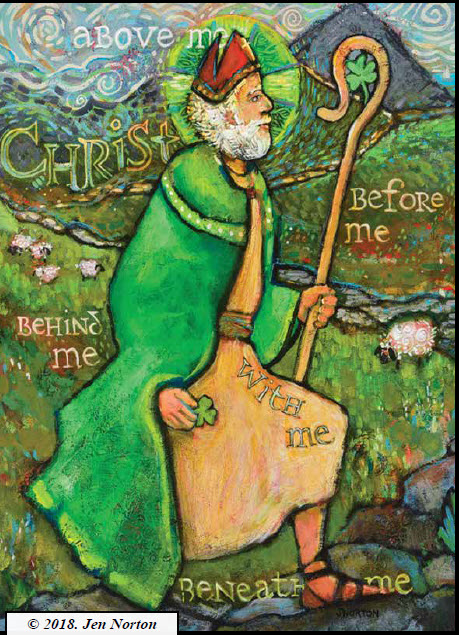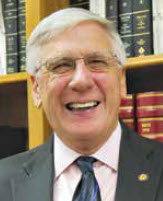Over the years, it has been common to come into Mayor Ronnie’s office for an interview, finding him dressed for the job and sporting any and all manner of ties. There’s the one that he uses for reading Dr. Seuss books to kids at various local schools. There are ties for all of the seasons and holidays, and a purple and gold one for Trinity School. March 17, St. Patrick’s Day was no exception. The mayor had on a green tie that sported shamrocks, and our discussion turned to the most famous celebration that occurs annually in the month of March. It is actually celebrated all over the world in more than 200 countries. The oldest St. Patrick’s Day Parade started in St. Augustine, Florida, in 1601, and it became a national holiday in 1904.
The traditional corned-beef-and-cabbage meal is typically not preferred in the UK, and I told him that my mom used to make yeast rolls shaped like shamrocks; we had corned beef and cabbage, and often she would make crème de menthe pie for dessert. Sometimes we had pistachio ice cream and chocolate cookies. I asked the mayor if there were any future plans to dye Athens Creek green like Chicago has dyed the Chicago River for the last six decades. His answer was “No,” followed by a chuckle.
Speaking of shamrocks, it is thought that they became somewhat of a sacred plant because the three leaves symbolized the Father, Son and Holy Spirit. And, when it comes to four-leaf clovers, statistics seem to suggest that the chances of finding one are about one in five thousand.
We both knew a little about the patron saint of the Irish, and learned some things. First of all, what was a total surprise was that St. Patrick has actually never been canonized as a saint (the process wasn’t in place at that time). He also was once a slave. According to History:
Ripped from his home, Patrick herded sheep for a local chieftain on the slopes of Mount Slemish in County Antrim in the north of Ireland. Deprived of food and clothes, Patrick lived in virtual isolation. His only companions were his flock and his newfound faith. Amid the desolation, Patrick’s Christianity blossomed. He prayed as many as 100 times during the day—and matched that total at night. Patrick wrote in the Confessio that six years into his captivity, an angel appeared in a dream and told him, “You have fasted well. Very soon you will return to your native country.” The angel told him of a ship leaving Ireland, and the young man walked across 200 miles of peat bogs and forests before arriving at a port, possibly Wexford, where he found a cargo ship bound for the European continent.
After the captain refused him passage, Patrick began to pray. Before he could finish, though, a sailor from the ship came shouting, “Come quickly – those men are calling you!” After learning that the captain changed his mind, Patrick sailed away from Ireland, believing that God’s protection must have been responsible for his unlikely escape.
Of course, there are those who believe this account of Patrick’s life is just a myth, but here is one thing we do know. Patrick spread the gospel, and spent 40 years of his life doing so. Essentially, the enslaved became the “empoweror.” Yes, I know, that is not a real word in the English language, but the only thing that is close is “emperor,” and that doesn’t work at all. At the end of the day, St. Patrick’s Day is about freedom, sacrifice, and way more than parades, green beer, or rivers. Having discovered some new things, there was only one thing left to do, and that was to pray. So, we did, and then it was time for Ronnie to roll.
By: Ali Elizabeth Turner








